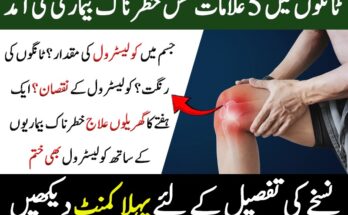Causes of Joint Pain
Osteoarthritis
Symptoms and Risk Factors
Osteoarthritis (OA) is the most common form of arthritis, characterized by the breakdown of cartilage in joints. Symptoms include pain, stiffness, and reduced flexibility. Risk factors include aging, obesity, and joint injuries.
Diagnosis and Progression
Diagnosis involves physical examination, patient history, and imaging tests like X-rays. OA progresses slowly, and managing it early can help maintain joint function and reduce pain.
Rheumatoid Arthritis
Symptoms and Risk Factors
Rheumatoid arthritis (RA) is an autoimmune disorder where the immune system attacks joint tissues, causing inflammation. Symptoms include joint pain, swelling, and fatigue. Risk factors include genetics, smoking, and hormonal changes.
Diagnosis and Progression
RA is diagnosed through blood tests for specific antibodies and imaging tests. Early diagnosis and treatment are critical to prevent joint damage.
Gout
Symptoms and Risk Factors
Gout is a type of arthritis caused by the accumulation of uric acid crystals in joints, leading to sudden and severe pain, often in the big toe. Risk factors include diet high in purines, alcohol consumption, and genetic predisposition.
Diagnosis and Progression
Diagnosis is confirmed through blood tests measuring uric acid levels and joint fluid analysis. Managing gout involves lifestyle changes and medications to control uric acid levels.
Injuries
Types of Injuries
Joint injuries can result from accidents, sports activities, or repetitive stress. Common injuries include sprains, strains, and fractures.
Impact on Joints
Injuries can lead to joint pain, swelling, and long-term damage if not properly treated. Rehabilitation and protective measures are essential for recovery.
Other Causes
Lupus
Lupus is an autoimmune disease that can cause joint pain and inflammation, along with other systemic symptoms.
Bursitis
Bursitis is the inflammation of the bursae, small fluid-filled sacs that cushion joints. It causes pain and swelling.
Tendinitis
Tendinitis is the inflammation of tendons, often due to overuse or injury, resulting in joint pain and tenderness.
Symptoms of Joint Pain
Joint pain can manifest in various ways, including swelling, stiffness, redness, and reduced range of motion. Severe or persistent symptoms should prompt a visit to a healthcare provider.
Diagnosis of Joint Pain
Accurate diagnosis is crucial for effective treatment. This process includes a detailed medical history, physical examination, and diagnostic tests like X-rays, MRIs, and blood tests to identify underlying conditions.
Comprehensive Relief Strategies
Medications
Over-the-Counter Options
Nonsteroidal anti-inflammatory drugs (NSAIDs) like ibuprofen and acetaminophen can relieve mild to moderate joint pain.
Prescription Medications
For more severe pain, doctors may prescribe stronger medications, including corticosteroids and disease-modifying antirheumatic drugs (DMARDs) for conditions like RA.
Physical Therapy
Benefits and Techniques
Physical therapy can strengthen muscles around the joints, improve mobility, and reduce pain. Techniques include exercises, manual therapy, and modalities like ultrasound.
Finding a Therapist
A licensed physical therapist can create a personalized treatment plan based on individual needs and conditions.
Lifestyle Changes
Diet and Nutrition
A balanced diet rich in anti-inflammatory foods like fruits, vegetables, and omega-3 fatty acids can help reduce joint pain. Avoid processed foods and excessive sugar.
Exercise and Weight Management
Regular exercise helps maintain joint function and reduces pain. Weight management is crucial to avoid extra strain on joints.
Home Remedies
Hot and Cold Therapy
Applying heat can relax muscles and improve circulation, while cold therapy reduces inflammation and numbs sore areas.
Herbal Supplements
Supplements like glucosamine, chondroitin, and turmeric can support joint health and reduce inflammation.
Alternative Treatments
Acupuncture
Acupuncture can relieve joint pain by stimulating specific points on the body to promote healing and pain relief.
Massage Therapy
Massage therapy helps reduce muscle tension, improve circulation, and relieve pain in affected joints.
Preventing Joint Pain
Healthy Lifestyle Choices
Maintaining a healthy weight, staying active, and eating a balanced diet can prevent joint pain and reduce the risk of arthritis.
Regular Check-ups
Regular medical check-ups can help detect joint problems early and prevent them from worsening.
Early Intervention
Prompt treatment of joint injuries and conditions can prevent long-term damage and maintain joint health.
Conclusion
Understanding the causes and treatment options for joint pain is essential for managing symptoms and improving quality of life. By incorporating medications, physical therapy, lifestyle changes, and home remedies, you can find comprehensive relief and maintain joint health.
Frequently Asked Questions (FAQs)
1. What is the most common cause of joint pain? Osteoarthritis is the most common cause of joint pain, especially in older adults.
2. Can diet affect joint pain? Yes, a diet rich in anti-inflammatory foods can help reduce joint pain, while foods high in sugar and processed ingredients can exacerbate it.
3. How effective is physical therapy for joint pain? Physical therapy is highly effective for improving joint function, reducing pain, and preventing further injury.
4. Are there any risks associated with home remedies? While most home remedies are safe, some people may experience allergic reactions or interactions with medications. Consult with a healthcare provider before starting any new treatment.
5. What are the warning signs that joint pain is serious? Severe pain, swelling, redness, warmth around the joint, and difficulty moving the joint are warning signs that require medical attention.






